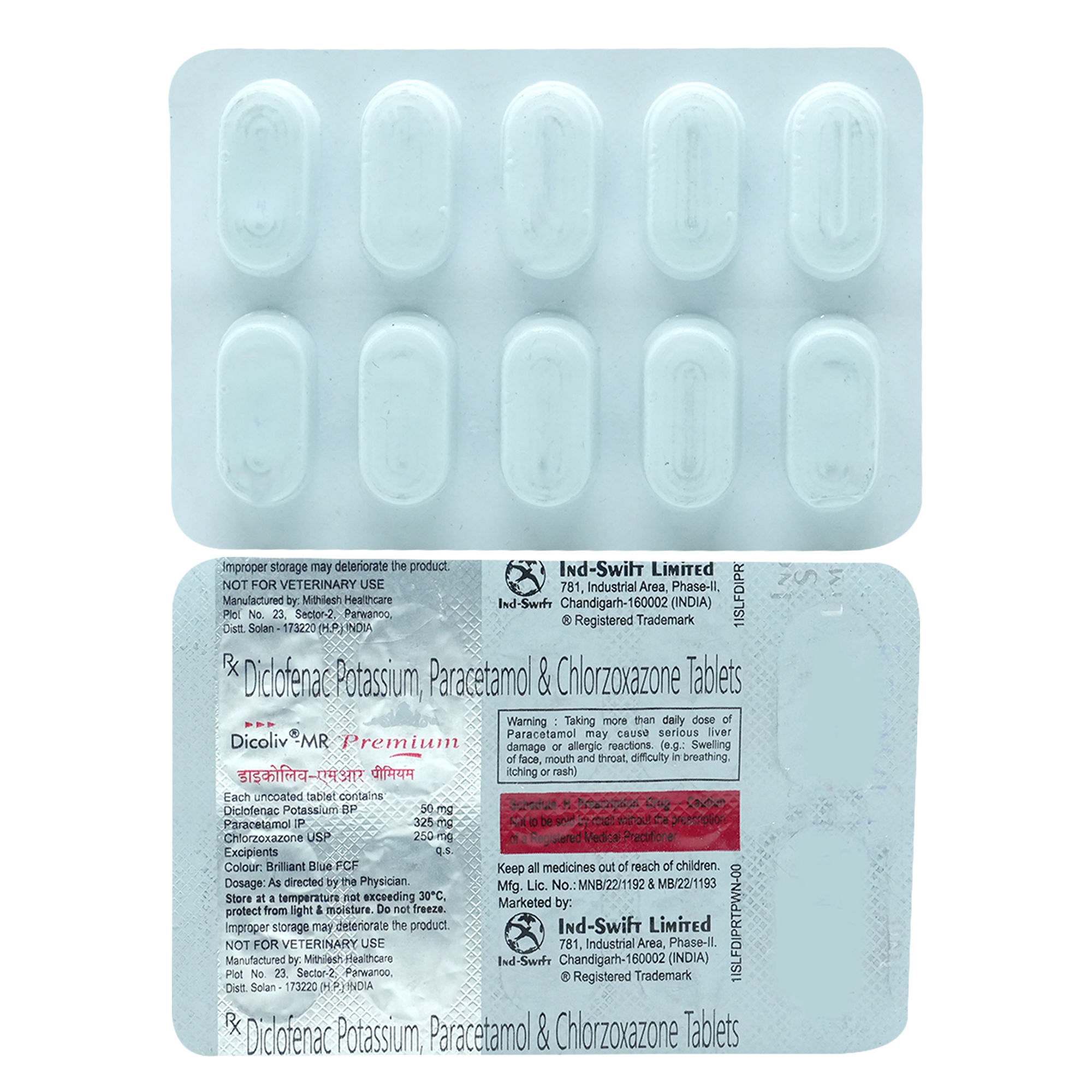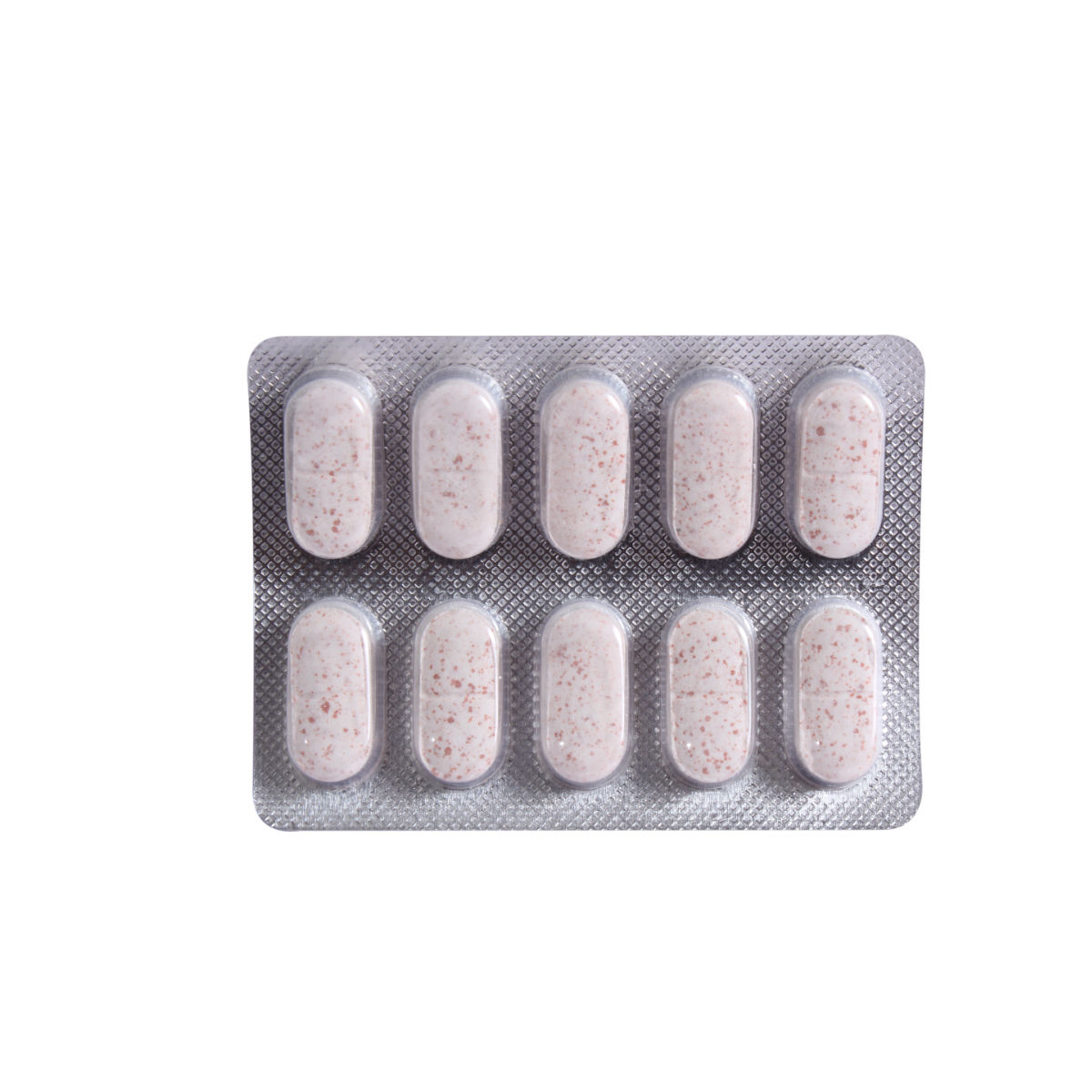DICLOFENAC+PARACETAMOL+CHLORZOXAZONE
About DICLOFENAC+PARACETAMOL+CHLORZOXAZONE
DICLOFENAC+PARACETAMOL+CHLORZOXAZONE belongs to the class of drugs known as 'non-steroidal anti-inflammatory drug' (NSAID). DICLOFENAC+PARACETAMOL+CHLORZOXAZONE is used in the reduction of musculoskeletal pain due to tissue injury, resolution of post surgery inflammation and oedema (swollen tissue with fluid). Pain can be temporary (acute) or long term(chronic) in nature. Musculoskeletal pain can be caused due to soft tissues (muscle, tendon, and ligaments) injury. Extreme tissue pain and inflammation caused due to sprains, strains or trauma or post-surgery may require a prolonged amount of time to heal.
DICLOFENAC+PARACETAMOL+CHLORZOXAZONE is a fixed-dose combination composed of three medicines namely: Diclofenac, Paracetamol and Chlorzoxazone. Diclofenac works by blocking the action of a chemical messenger known as cyclo-oxygenase (COX) which causes pain and swelling at the injured or damaged tissue site. Paracetamol acts as a mild analgesic (mild pain reducer) and antipyretic (fever reducer) which enhances the pain relief action of Diclofenac. Third medicine i.e. Chlorzoxazone is a muscle relaxant, helps by blocking nerve impulses or pain sensations sent by the brain and causes relaxation of muscles.
DICLOFENAC+PARACETAMOL+CHLORZOXAZONE can be taken with or after the meal. To avoid stomach upset DICLOFENAC+PARACETAMOL+CHLORZOXAZONE can be taken with food or milk. It should be swallowed whole with a glass of water. Do not take DICLOFENAC+PARACETAMOL+CHLORZOXAZONE if your pain lasts for more than ten days or fever lasting for more than three days. Do not take a double dose if you missed one dose. Like all medicines, DICLOFENAC+PARACETAMOL+CHLORZOXAZONE may cause side effects, although not everybody gets them. Most of the side effects of DICLOFENAC+PARACETAMOL+CHLORZOXAZONE are drowsiness, constipation, diarrhoea, stomach upset, slight discolouration of urine, and ringing or buzzing sounds in the ears. In case of any discomfort, speak with your doctor.
Do not take DICLOFENAC+PARACETAMOL+CHLORZOXAZONE if you are allergic to painkillers like aspirin, paracetamol, naproxen or diclofenac. It is not recommended for use in children, people with liver disease, heart disease or gastric ulcers/bleeding problems. DICLOFENAC+PARACETAMOL+CHLORZOXAZONE may be associated with a small increase in the risk of heart attack (myocardial infarction). Avoid consumption of alcohol as it may damage your liver and cause even more side effects on taking this drug. Consult your doctor if your symptoms of pain, inflammation and fever do not disappear even after ten days.
Uses of DICLOFENAC+PARACETAMOL+CHLORZOXAZONE
Medicinal Benefits
DICLOFENAC+PARACETAMOL+CHLORZOXAZONE is composed of three medicines namely: Diclofenac, Paracetamol and Chlorzoxazone. Diclofenac works by blocking the action of a chemical messenger known as cyclo-oxygenase (COX) which causes pain and swelling at the injured or damaged tissue site. Paracetamol acts as a mild analgesic (mild pain reducer) and antipyretic (fever reducer) which enhances the pain relief action of Diclofenac. Third medicine i.e. Chlorzoxazone is a muscle relaxant, helps by blocking nerve impulses or pain sensations sent by the brain and causes relaxation of muscles.
Directions for Use
Storage
Side Effects of DICLOFENAC+PARACETAMOL+CHLORZOXAZONE
- Drowsiness
- Constipation
- Diarrhoea
- Stomach upset
- Slight discolouration of urine
- Ringing or buzzing sounds in the ears
Patients Concern
Disease/Condition Glossary
Musculoskeletal pain is generally caused by disorders of bones, joints, muscles, tendons, ligaments, or a combination. Injuries (mostly sports related injury) are the most common cause of musculoskeletal pain. Muscle pain (myalgia) can be caused due to injury, infection, loss of blood flow to the muscle, infection, or a tumour. Extreme tissue pain and inflammation caused due to sprains, strains, or trauma or post-surgery may require a prolonged amount of time to heal
FAQs
No, DICLOFENAC+PARACETAMOL+CHLORZOXAZONE should not be taken as a long term medication as it may lead to stomach ulcers/bleeding and kidney problems. For best results of DICLOFENAC+PARACETAMOL+CHLORZOXAZONE, take it in doses and duration mentioned by your doctor.
No, it is not advisable to take DICLOFENAC+PARACETAMOL+CHLORZOXAZONE with depression medication. Please inform your doctor if you are taking depression medicine before starting DICLOFENAC+PARACETAMOL+CHLORZOXAZONE.
Yes, DICLOFENAC+PARACETAMOL+CHLORZOXAZONE is a short term medication and if you feel better you can stop taking DICLOFENAC+PARACETAMOL+CHLORZOXAZONE, but only after consulting your doctor.
DICLOFENAC+PARACETAMOL+CHLORZOXAZONE is known to be contra-indicated in patients with allergy to painkillers (NSAIDs) or any of the components or excipients of this medicine. Its use should also be avoided in patients with history of stomach ulcer and kidney/liver disease.
Yes, DICLOFENAC+PARACETAMOL+CHLORZOXAZONE is known to cause dizziness. If you feel dizzy, please take rest and also avoid driving while you take DICLOFENAC+PARACETAMOL+CHLORZOXAZONE as it can be harmful.
No, DICLOFENAC+PARACETAMOL+CHLORZOXAZONE is not indicated for stomach pain. Also, If you have stomach pain post ingestion it may be a sign of stomach ulcer or gastric bleeding. Do not take DICLOFENAC+PARACETAMOL+CHLORZOXAZONE in this condition. It is better to inform your doctor in case of stomach pain post ingestion of this medication.
It depends on whether your cough and cold pills contains diclofenac, paracetamol and Chlorzoxazone or not. If it contains these three medicines, do not take it. It may lead to overdosage, thereby producing unpleasant side effects. Consult your doctor before taking it in such cases.
No, do not take DICLOFENAC+PARACETAMOL+CHLORZOXAZONE until prescribed by your doctor. For example, your shoulder pain may be due to lungs, spleen or gallbladder problem. Your back pain may be due to kidney stone, pancreas swelling, or in women, pelvic disorders. Your arm pain (especially left arm) may be due to heart attack (myocardial infarction).








